Story and photos by Jonathan Sharp
If you have been with us for the past few years and have read my ramblings you are probably already aware of my love for old cars and historic racing. Well I have also inherited my father’s love of old aeroplanes, so the Goodwood Revival each year is a double whammy for me. Not just fantastic and rare old racing cars, but fantastic and rare old aeroplanes courtesy of the annual Freddy March Spirit of Aviation Concours for Aeroplanes built before 1966 held as part of the Revival meeting.
Freddy March, as he liked to be called, was the current Duke’s Grandfather and was a pioneer aviator and racing motorist. Last year’s entries had everything from the ‘Cadillac of the Skies’ P51 Mustang to a Catalina (Canso) Flying Boat and the sole surviving, and one of only two built, Arrow Active biplane. Mind you, these photos were taken on Goodwood, September 20, 2022, and we hope that this year’s Revival will be as fantastic as last.
Since 2021, in addition to prizes for the top three aeroplanes as picked by the judges, the Rob Wildeboer Cup, in honour of the much missed Goodwood Flying School Manager, is awarded to the best restored aeroplane in the contest as chosen by his colleagues. I am pleased to say that their choice matched mine, namely the aforementioned 1932 Arrow Active 2.
The judges’ picks were as follows.
1st place, 1942 Hawker Hurricane – Aircraft Restoration Co
2nd place, 1943 Consolidated PBY Catalina – Plane Sailing Ltd
3rd place, 1959 Beech 18 – Carlo Ferrari
The Rob Wildeboer Cup
A new prize last year honored a much-missed member of the team here at Goodwood. Rob Wildeboer worked in our aviation business for 35 years, beginning as a YTS apprentice and rising to be MD of the aviation business and most recently Flying School Manager. He was a hugely popular member of the team, and his sudden death was a devastating loss.
Rob was instrumental in establishing and curating the Freddie March Spirit of Aviation, including last year’s stunning display. The Rob Wildeboer Cup will each year be awarded to the best restoration of an aircraft in the Freddie March Spirit of Aviation, as chosen by his colleagues. A fitting tribute to Rob’s lifelong passion for engineering.
2022 winner
1932 Arrow Active – Ben Cox/David Starkey
Goodwood web site info below
https://www.goodwood.com/motorsport/goodwood-revival/explore-revival/freddie-march-spirit-of-aviation/
Bucker Jungmeister
Designed by Carl Bucker in 1935 and first flown by Louise Hoffman, the first female works pilot, from Rangsdorf Airfield near Berlin, the Bucker Jungmeister was designed as an aerobatic trainer and used by the Luftwaffe and various other air forces including those of Spain, Switzerland and Romania. Stephen Stead’s example G-BUTX was manufactured at Rangsdorf in 1940 and then transported to Spain to be assembled by CASA and used by the Spanish Air Force until retirement in 1968. Restored by the Real Aeroplane Company at Brighton in the early 2000s and then shipped to the USA where she remained for a couple of years before returning to the UK and operated by The Great War Display Team before being purchased by Stephen Stead.
De Havilland Devon C2
Designed to meet the Brabazon Committee’s requirement for a replacement to the Pre War De Havilland Dragon Rapid biplane the DH104 first flew in September 1945. Powered by two DH Gipsy Queen 70 engines the DH104 could carry up to 11 passengers depending on the configuration. In total 544 Doves of all marks were constructed including 140 of the Military Light Transport versions called Devon and Sea Devon. Osmond Kilkenny’s Devon C2 entered service with the RAF in 1948 and served in West Germany from 1965 and then with the Air Attache in Saigon Vietnam during the 1970s. Entering the Civil Register in 1984 as G-BLRB she operated as a charter aircraft before being reregistered as G-OPLC, entering into private ownership in 2011.
DHC1 Chipmunk
De Havilland Aircraft of Canada was incorporated in March 1928 operating in a sales and servicing role for the parent company’s products. The first DH Canada design was the DHC1 Chipmunk which first flew in May 1946, with the model being adopted as the standard primary trainer for the RAF. The Mike Oscar Group’s Chipmunk T10 G-BBMO entered service with No 5 Basic Flying Training School at RAF Desford in January 1952 carrying the serial number WK154. From 1954 to 1958 WK154 was assigned to RAF fighter command whose livery she wears today.
Nord 1002 Pinguin G-ETME
Built in 1951, Simon O’Connell’s Nord 1002 Pinguin G-ETME today carries the markings of Messerschmitt BF108 F8-CA of Stab/KG40, on the 11th September 1943 two Lufftwaffe officers stole the aircraft from Chateaudun in France with the intention of deserting to England. As they crossed the English coast the were attached by RAF Typhoons, crash landing at Ford 5 miles south of RAF Westhampnett. The prototype of the BF108, the M37, first flew in 1934 and was ground breaking in design for the time and was soon in service with the Luftwaffe.. Produced after the War by Nord as the 1002 Pinguin, fitted with a Renault engine.
Stinson Reliant
Founded by Edward (Eddie) Stinson as the Stinson Airplane Company in Dayton Ohio in 1920, in 1926 the company became the Stinson Aircraft Syndicate based in Detroit and began constructing light aircraft. In 1929 the Cord Company purchased a controlling interest and financed further aircraft development. Designed as a 4/5 seater touring and utility aircraft, the Stinson Reliant first flew in 1938. Navy Wings-Paul Kehoe’s example was constructed in 1943 and supplied to the Royal Navy and registered as FK877. Her Navy life included service with 740 Naval Air Squadron based at Royal Navy Air Station in Scotland, and 703 Naval Air Squadron based at RNAS Thorney Island.
Cessna 190/195 Business Liner
The Cessna 190/195 Business Liner was in production between 1947 and 1954, Stephen Moth’s example G-BTBJ, nicknamed Mi Querida (My Darling) by its first owner, was constructed in 1952. Sold new to an oil engineer who used her to fly up and down the west coast between Alaska and Mexico. G-BTBJ was first registered in the UK in 1991.
Arrow Active 2 G-ABVE
Ben Cox’s 1932 Arrow Active 2 G-ABVE was the second and last example built and is the sole survivor. Designed by Arthur Thornton as an all metal single seat biplane G-ABVE differed from the first example by being powered by a De Havilland Gypsy 111 engine rather than a Cirrus Hermes and featured a redesigned wing center section. Originally owned by Arrow Aircraft and flown in the King’s Cup air races of 1932 and 1933 she was sold by the company in 1946. In storage between 1935 and 1957, she was restored by the Tiger Club in 1958. Arrow Aircraft (Leeds) was formed in 1930 but when sales of the Active failed to materialize the company moved to Yeadon and concentrated on building components and armaments before being sold to Slingsby Sailplanes in 1957.
Beech H18 N700TN
Osmond Kilkenny’s Beech H18 N700TN, one of over 9000 examples of various different types built between 1937 and 1969, was constructed in 1964 with the optional tricycle undercarriage that was developed by Volpar. Used as a civil registered corporate aircraft originally in the USA N700TN is powered by twin Pratt and Whitney R985 engines rated at 400hp.
Waco YMF-5C
The original Waco Aircraft Company of Troy, Ohio was founded in 1929 but ceased trading in 1947. Waco Classic Aircraft (now called the Waco Aircraft Corporation) of Kellogg Airport, Michigan was formed in 1983 to build the WMF model to the original plans. The model F, designed originally in the 1930s, is a three seater open cockpit biplane. Archie Dudgeon’s 1936 Type Waco YMF-5C VH-YRB was constructed around an original Jacobs R755 engine of 1942 vintage in 2004 for a Florida based owner. The current owner purchased YRB in 2010 and based her in Perth Western Australia, where she was flown regularly, before transferring her to Oban in Scotland in 2020.
Auster G-AHGW
Formed in the USA in 1936, The Taylorcraft Aviation Company produced light aircraft for the civilian aviation market. In 1938 Taylorcraft Aeroplanes (England) was established to build aircraft under license. The first aircraft to enter RAF service was the Auster 1, as an AOP (Air Observation Post) in 1942. Simon Tilling/Historic Army Aircraft Flight Trust’s Auster G-AHGW/LB375 was assigned to RAF 655 AOP Squadron in December 1942. In March 1943 she was transferred to No 45 Operational Training Unit at RAF Larkhill Wiltshire to train Army co-operation air observers. In March 1945 she was transferred to 451 Squadron Royal Australian Airforce and by September of that year was serving in Germany. Removed from service in January 1946 she was purchased by the London Aeroplane Club in March 1946. Several further owners followed together with a period of storage before being recently restored.
Stampe SV4C
Belgium Flying Corps pilot Jean Stampe met Maurice Vertongen and together they founded the Stampe et Vertongen Aircraft Company in Antwerp Belgium in 1923. First flown on the 17th May 1933, the SV4 light tourer/trainer biplane became their most successful model. Initially powered by a de Havilland Gipsy 111 engine, most post war examples were powered by a 140 hp Renault 4-Pei engine and built under license by SNCAN in France and Atelier Industrial de L’Aeronautic d’Alger in Algeria. Ben Perkins’s 1948 Stampe SV4C G-BPLM is a French/Algerian example fitted with a Gipsy Major engine.
Miles M65 Gemini
The Miles M65 Gemini was the last aeroplane designed by FG Miles before the company went bust in 1947. To re-establish the company after WW2 the company designed a twin engined aircraft based on the earlier Miles Messenger. First flown in October 1945, the three passenger M65 attracted 130 orders in the first year of production. Richard Pike’s Gemini G-AKKB was built in 1947 and purchased by Fred Dunkerley, a Lancashire business man, in 1948, Based at Barton Aerodrome, the aeroplane was used for racing between 1949 and 1958 winning two races in 1950, the same year that it was proposed to convert the Gemini to jet propulsion; obviously the conversion was not proceeded with. In 1961 the depth of the fuselage was reduced and the windscreen modified. Fred Dunkerley sold the Gemini in 1969 and the aeroplane was restored in 1977.
Vickers Supermarine Spitfire PR
A Spitfire with a racing history, Spitfire PR (Photo Reconnaissance) XI PL983 known as the American Spitfire, due to being part of the US Embassy flight in London, in the hands of war time ATA Pilot Eleanor Lettice Curtis finished first in the 1948 Wiltshire Flying Club Handicap race at an average speed of 318 mph, and two weeks later fifth in the Cinque Ports Flying Club High Speed Handicap race directly behind the De Havilland Vampire jet of WW2 night fighter ace John Cunningham, a race in which the entrants had to have a minimum handicap speed of 300 mph. Entered by John Romain, PL983 wears the markings she wore whilst serving in Europe with number 4 and number 2 Squadron RAF.
Klemm L25A
Considered a ‘gentleman’s carriage,’ Richard Menage’s Klemm L25A is powered by a 9 cylinder British Salmson AD9 40hp engine and cruises at a nice and sedate 55 mph. This example, the 16th oldest aeroplane on the UK Civil Register, was built in 1929 and exhibited at the Barcelona International Exposition for 7 months and then purchased in February 1930 by Captain John Hargreaves of the Household Brigade Flying Club based at Heston. G-AAUP is believed to be one of only two airworthy examples and is now based in North Yorkshire.
Vickers Supermarine Spitfire Porky II
Spitfire RW382,’The Suffolk Spitfire’ was manufactured as a low back Mk XVIe at Castle Bromwich and delivered to the RAF in July 1945. Struck off charge in December 1954, RW382 spent many years in the role of a Gate Guardian before being sold onto the civil market in 1988. Restored to airworthy condition in 1991 and sold to the USA in 1994, following a crash in 1998 the wreckage was restored at Biggin Hill and converted to a high back Mk IX. In September 2020 RW382 was painted to represent ‘Porky II’ as flown in the Mediterranean theatre by Lt Robert Connor of the 309th Fighter Squadron, 31st Fighter Group USAAF.
Hawker Hurricane
If you think this Hawker Hurricane looks a bit different, it is. Built by the Canadian Car and Foundry Company as a Mk11B and delivered to the RCAF on the 11th February 1942, BE505 served with 135 Squadron seeing action in the Dieppe landings on the 19th February 1942. Struck off charge on the 6th September 1944 and sold into the civilian market at war’s end, 505, unlike many civilian Hurricanes, remained substantially whole and did not end up supplying parts to keep tractors and the suchlike running on the Canadian prairies. Purchased by Jack Arnold in the 1970s, then passing through several hands until being purchased by Tony Ditheridge of Hawker Restorations Ltd. Restoration commenced in 2005 and in 2007 505 joined the Hanger 11 collection. In 2019 505 was converted by Hawker Restorations as a unique two seater.
Consolidated Catalina
Entered by the Catalina Society/Plane Sailing, G-PBYA was ordered by the Royal Canadian Air Force as a Canso (basically a Consolidated Catalina) and built by Canadian Vickers at Cartierville. Taken on charge by the RCAF on the 27th October 1943, and wearing the serial number 11005, she initially saw service with 9 (Bomber Reconnaissance) Squadron at Bella Bella on the coast between Vancouver and Prince Rupert on night/day anti submarine patrols. By 1944 the threat of a Japanese invasion of Western Canada had subsided so 9 Squadron was disbanded with its Canso’s being transferred to 7 (BR) Squadron operating out of Alliford Bay in Queen Charlotte Bay where 11005 continued to fly anti submarine patrols. Following the end of the war 11005 entered a period of storage before being converted to a freighter in 1948. Still servicing with the RCAF 11005 continued to fly photo reconnaissance and Artic survey flights until finally being struck off Military charge on the 25th May 1961. Since then 11005 has served as a transporter, a fire bomber, and since 2004 as a star on the European Air Show circuit.
North American Mustang P51D
Entered by Dan Friedkin/Comanche Fighters, North American Mustang P51D-30-NA serial 44-74391 was accepted by the USAAF on the 23rd May 1945 and following a period of storage served with various Air National Guard Units before being purchased from the USAF by the Guatemalan Air Force in 1958 and allocated the serial number FAG 351. Entering the civilian market in 1972, various owners, including Connie Edwards of Big Spring Texas, followed, before, in 2000, she was purchased and restored by Chris Woods/Woods Aviation. Returning to the skies in 2003, in 2009 she joined the amazing Freidkin family’s Comanche Fighters Collection LLC.
Seafire Mk XVII
Navy Wings Seafire Mk XVII (SX336) was constructed by Westlands in Yeovil in April 1946 entering service with the Fleet Air Arm at RNAS Bramcote Warwickshire in May where it is believed she served with 833NAS Royal Navy Reserve. Transferred to RNAS Stretton for storage in 1953 and then scrapped in 1955. Her now derelict fuselage was discovered in 1973 but restoration did not commence until 1978. She changed hands various times but it was not until she was purchased by former US Navy pilot, and long time supporter of Navy Wings, Tim Mann that her restoration was completed, returning to flight in 2006 with Navy Wings acquiring her from Tim Mann in November 2021, She now flies in the markings of 767 Naval Air Squadron.
North American Goodwood Harvard 11B
If, like me, if you used to frequent Air Shows in the UK during the late 80s you would have probably seen this aircraft, painted to represent a Japanese Zero fighter, being displayed by the Pop singer Gary Numan who owned her for 21 years. The Goodwood Harvard 11B G-AZSC was constructed in 1943 by Noorduyn Aviation in Canada and was allocated the USAAF serial 43-13064, Selected for shipment to the RAF AZSC was shipped to the UK from Newark New Jersey aboard SS Morgenue arriving at Liverpool docks on the 6th January 1944. Allocated to Rotes Securities (who had a contract to construct Halifax bombers) for use as a communication aircraft, a task for which she was not ideally suited, by February 1945 she was in storage. In November 1946 she was transferred to the Royal Netherlands Air Force and in 1947 she was shipped to Sweden. By 1969 she had passed onto the civil register in Holland where she was used as a sign writing aircraft. In April 1972 she was purchased by Doug Arnold for his Warbirds of Great Britain collection before being sold to Gary Numan. In 2005 G-AZSC joined the Goodwood Flying Club fleet who continue to operate her to this day.
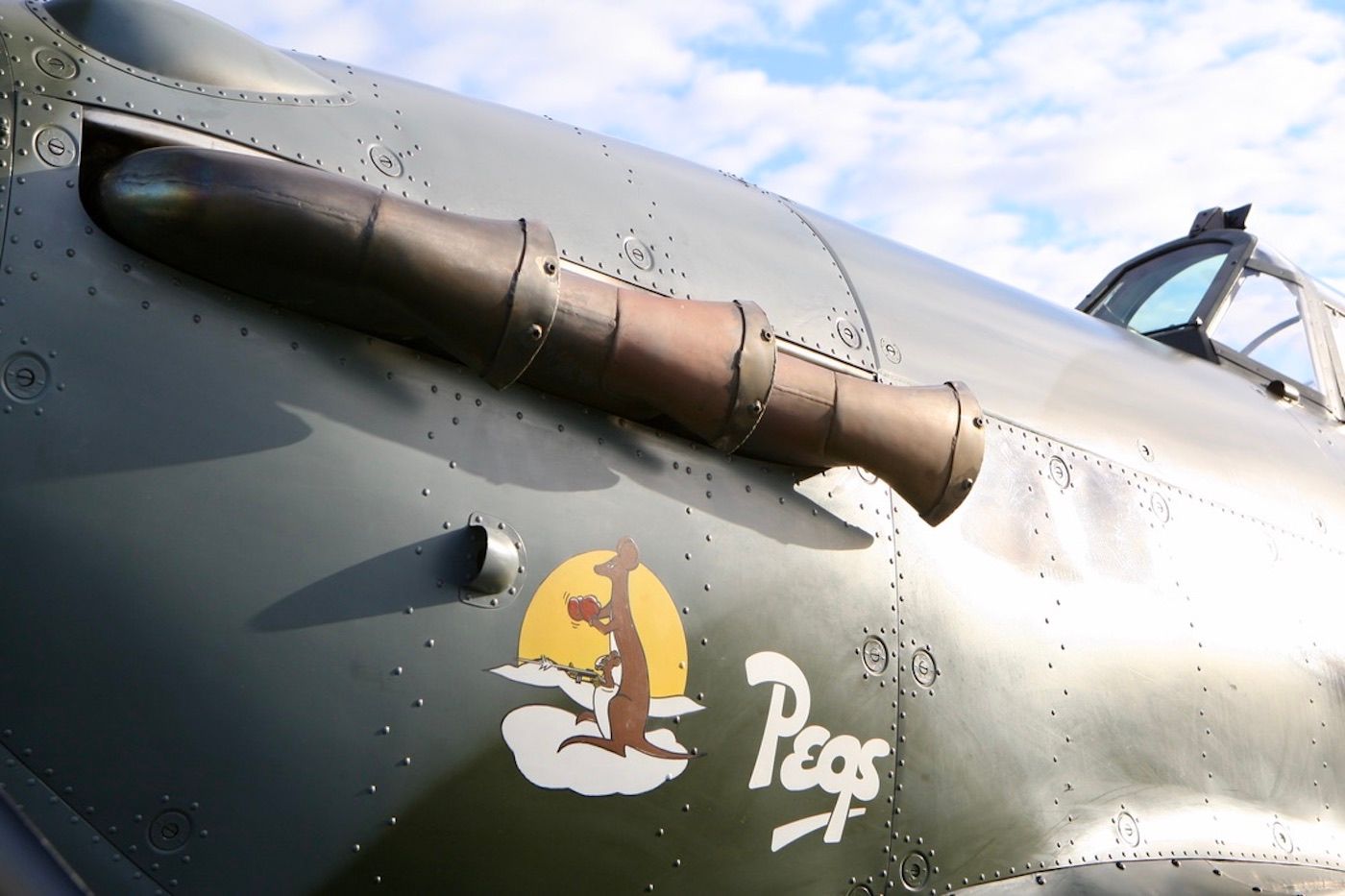
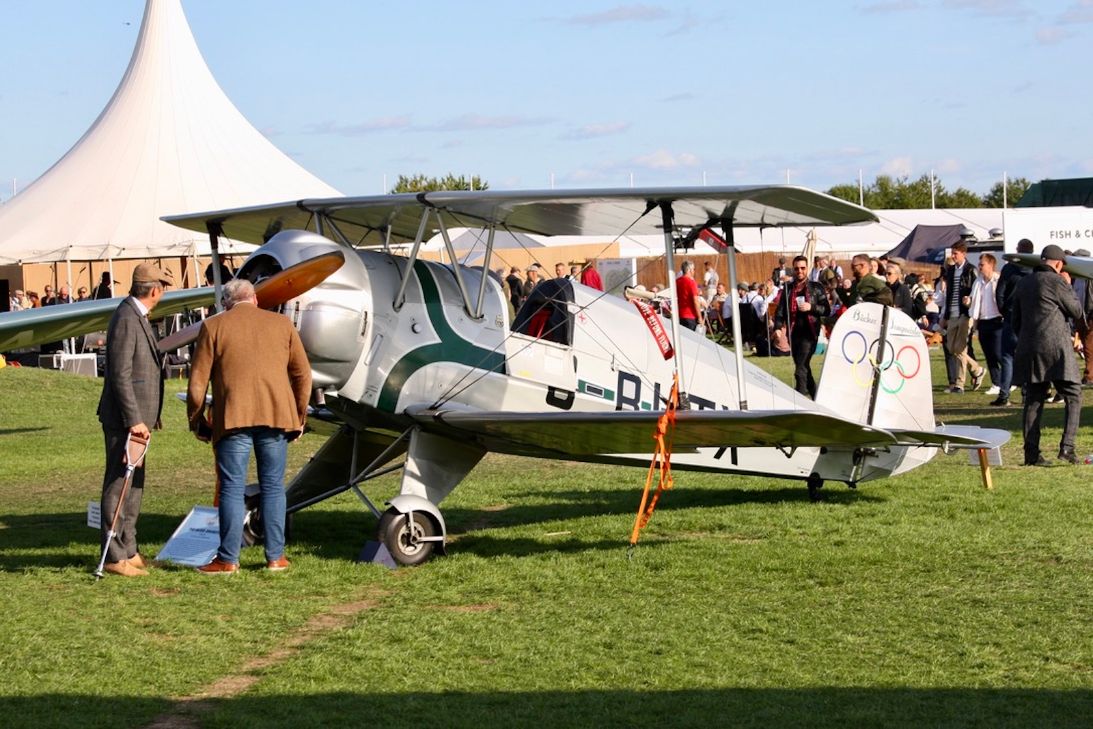
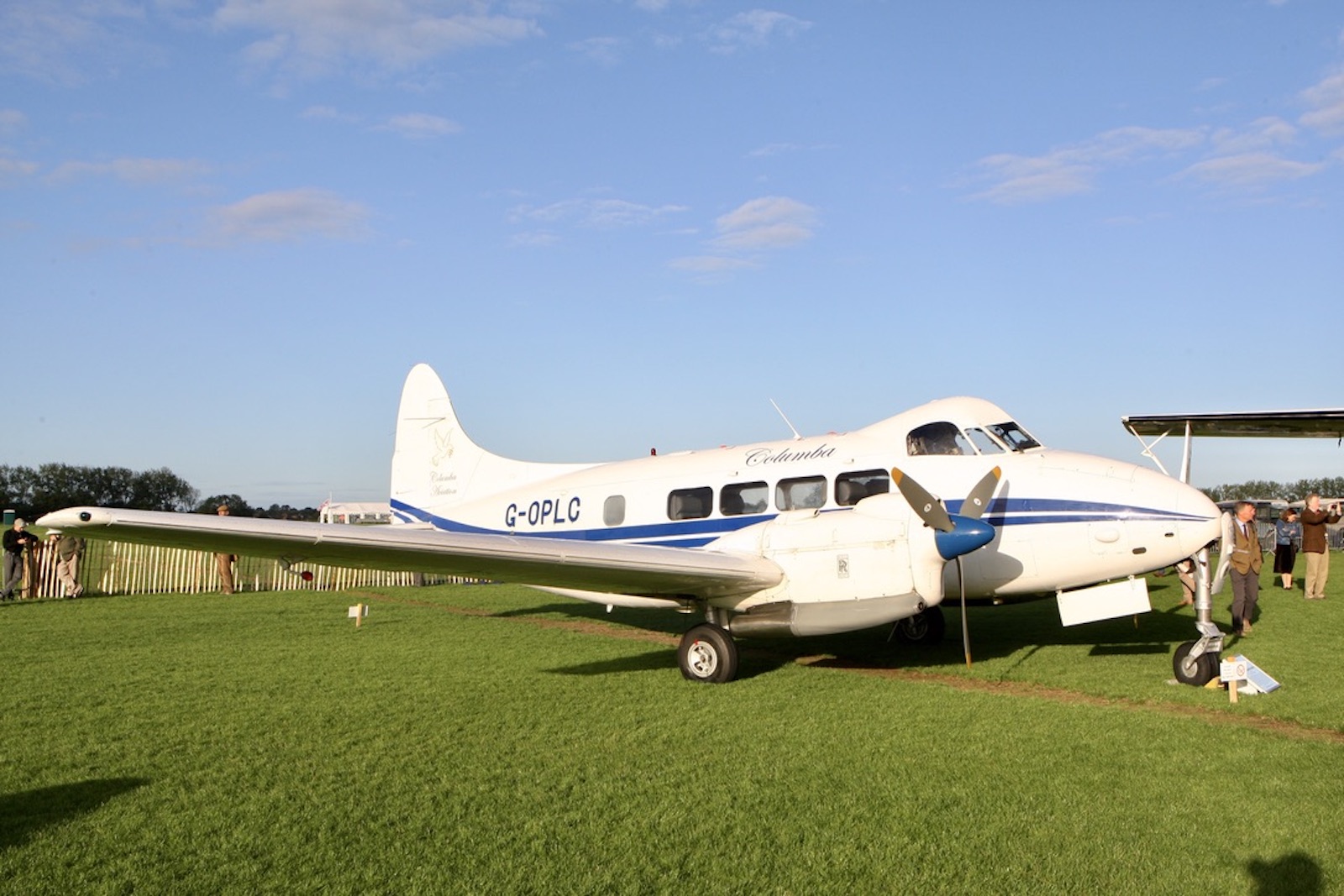
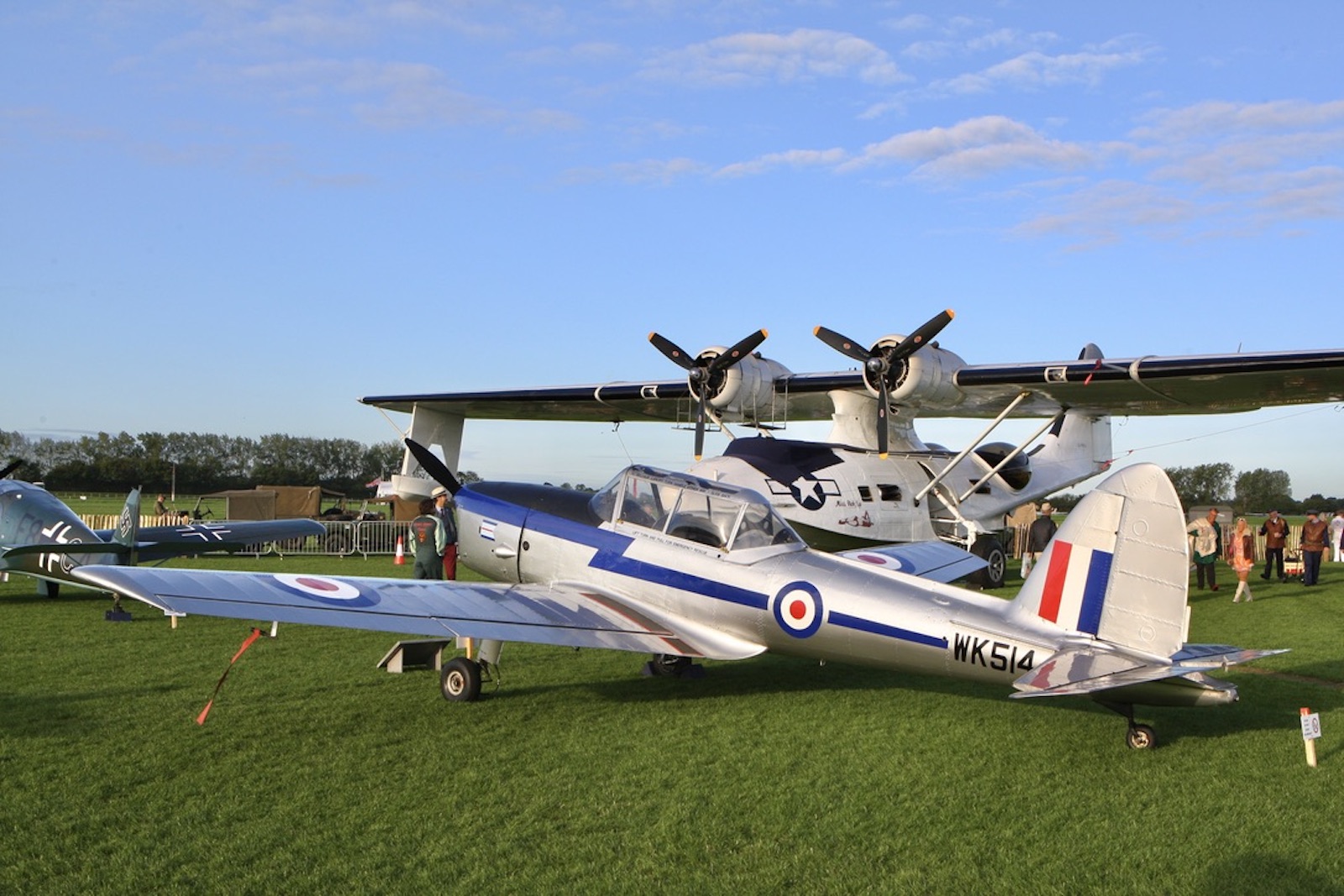
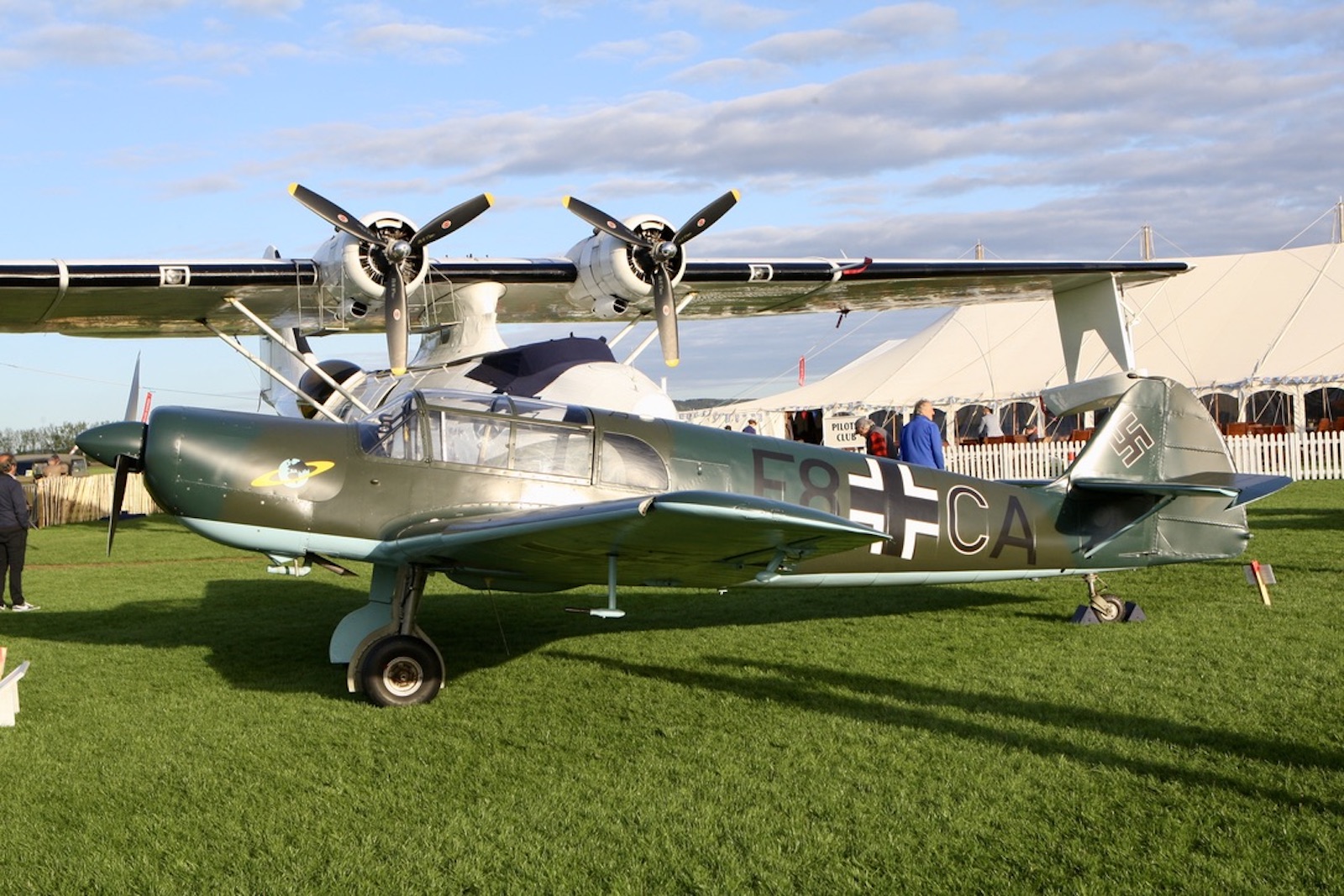
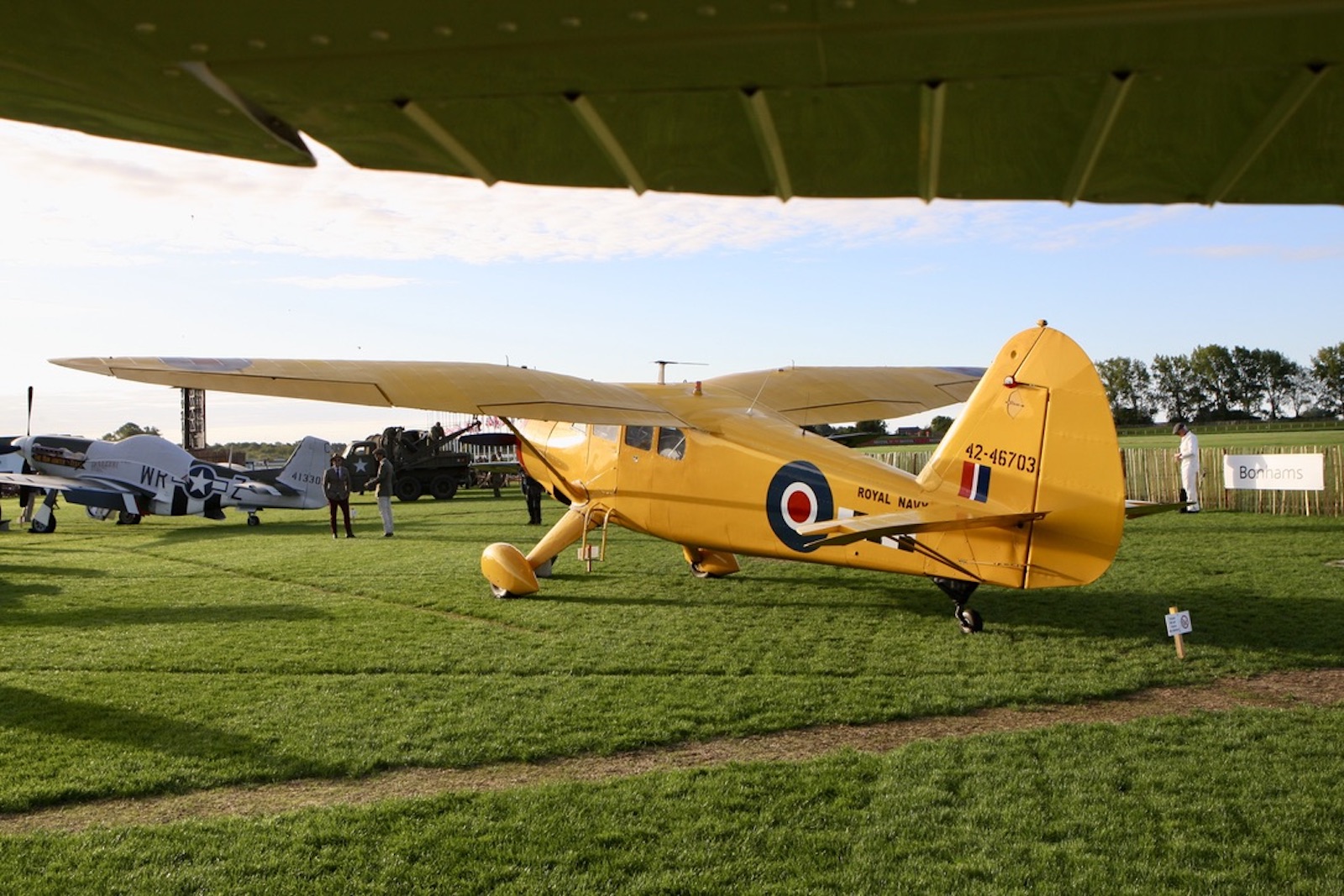
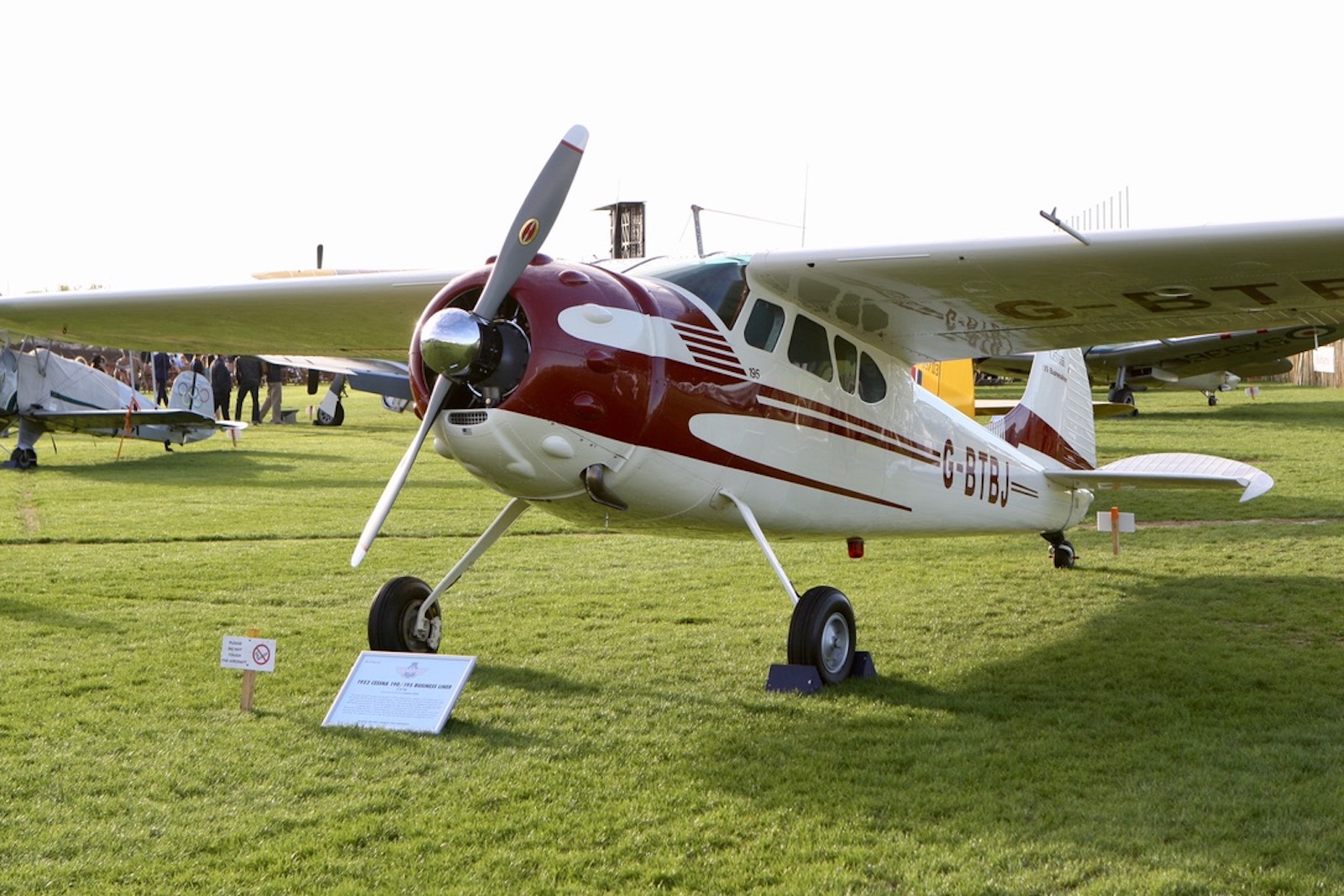
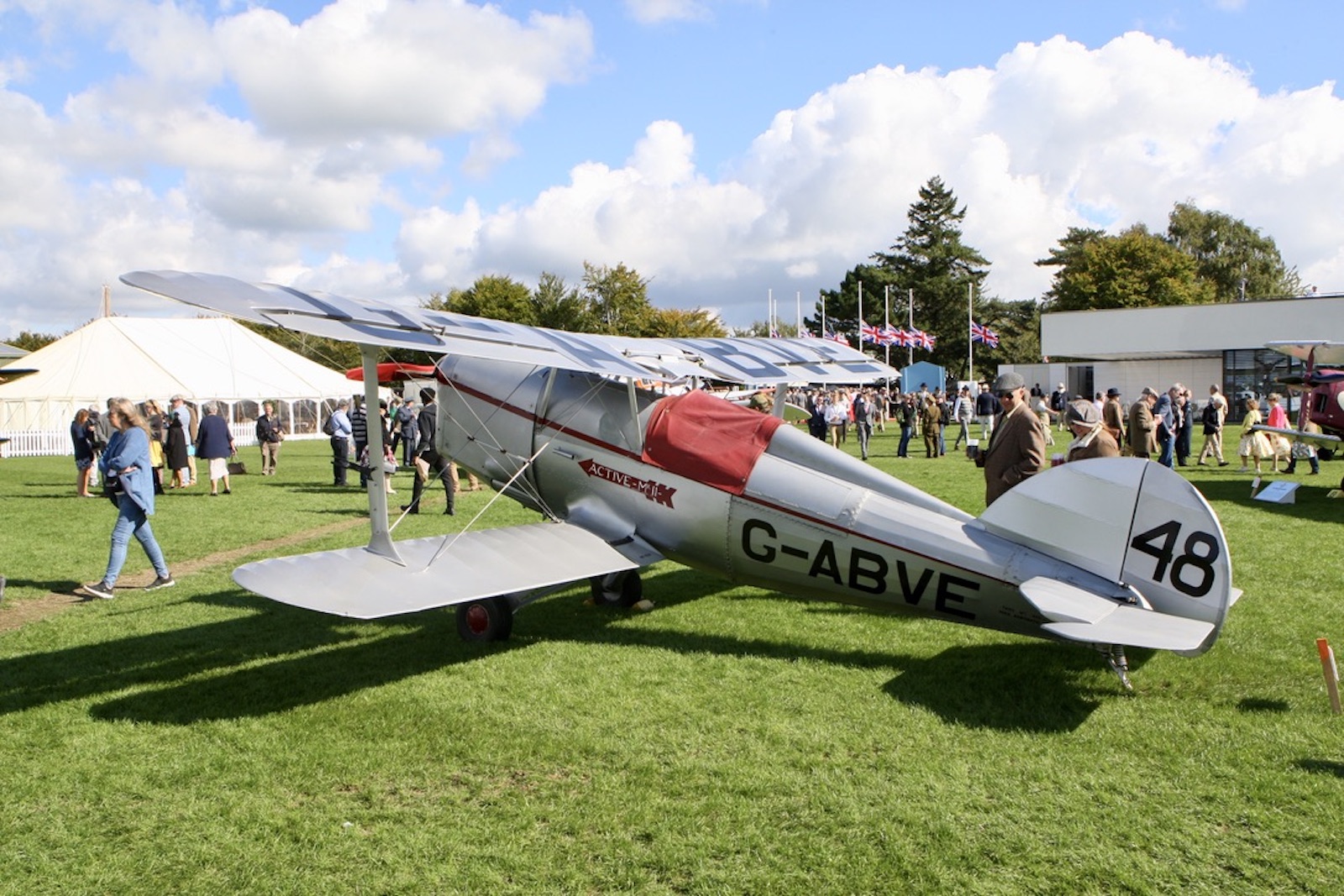
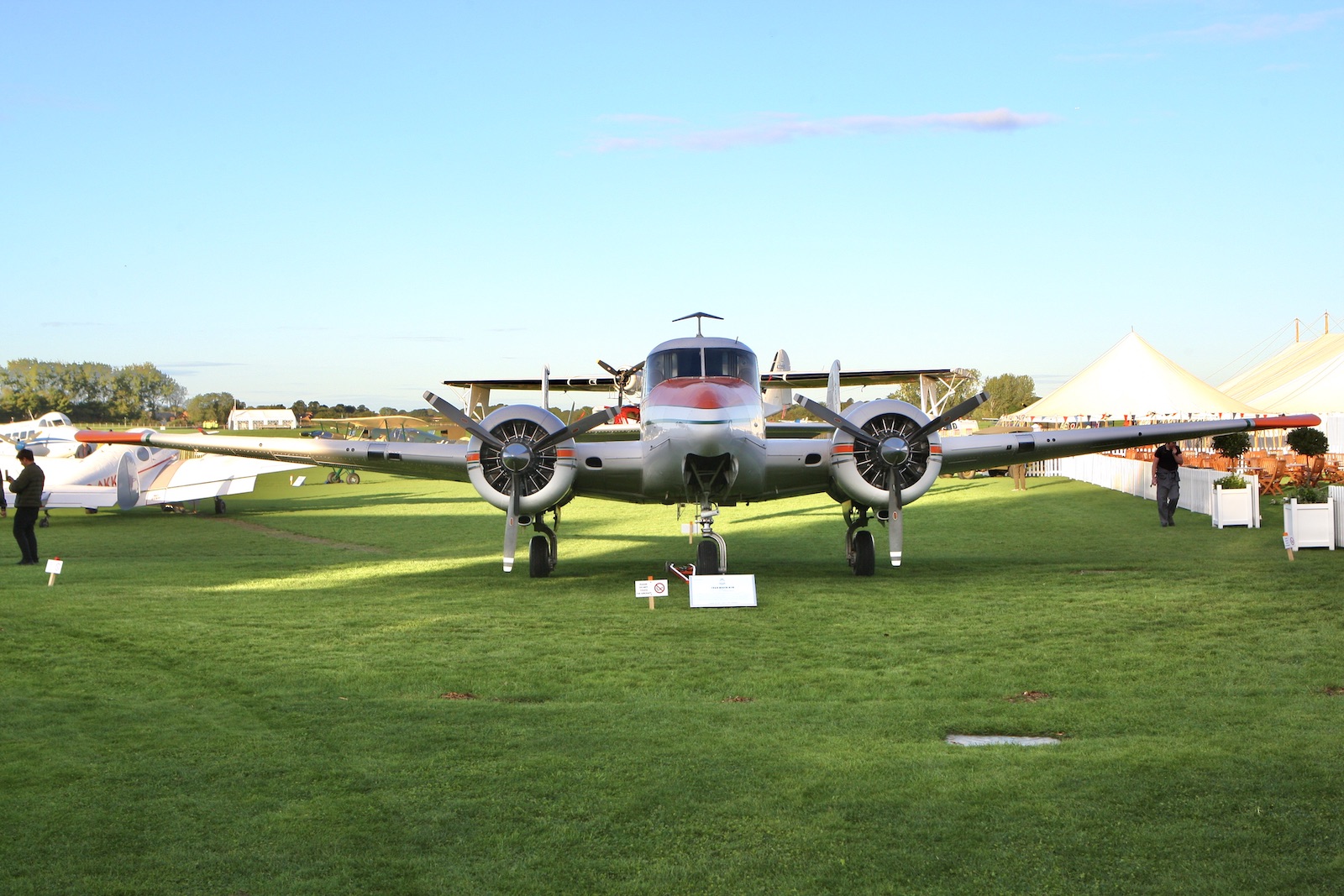
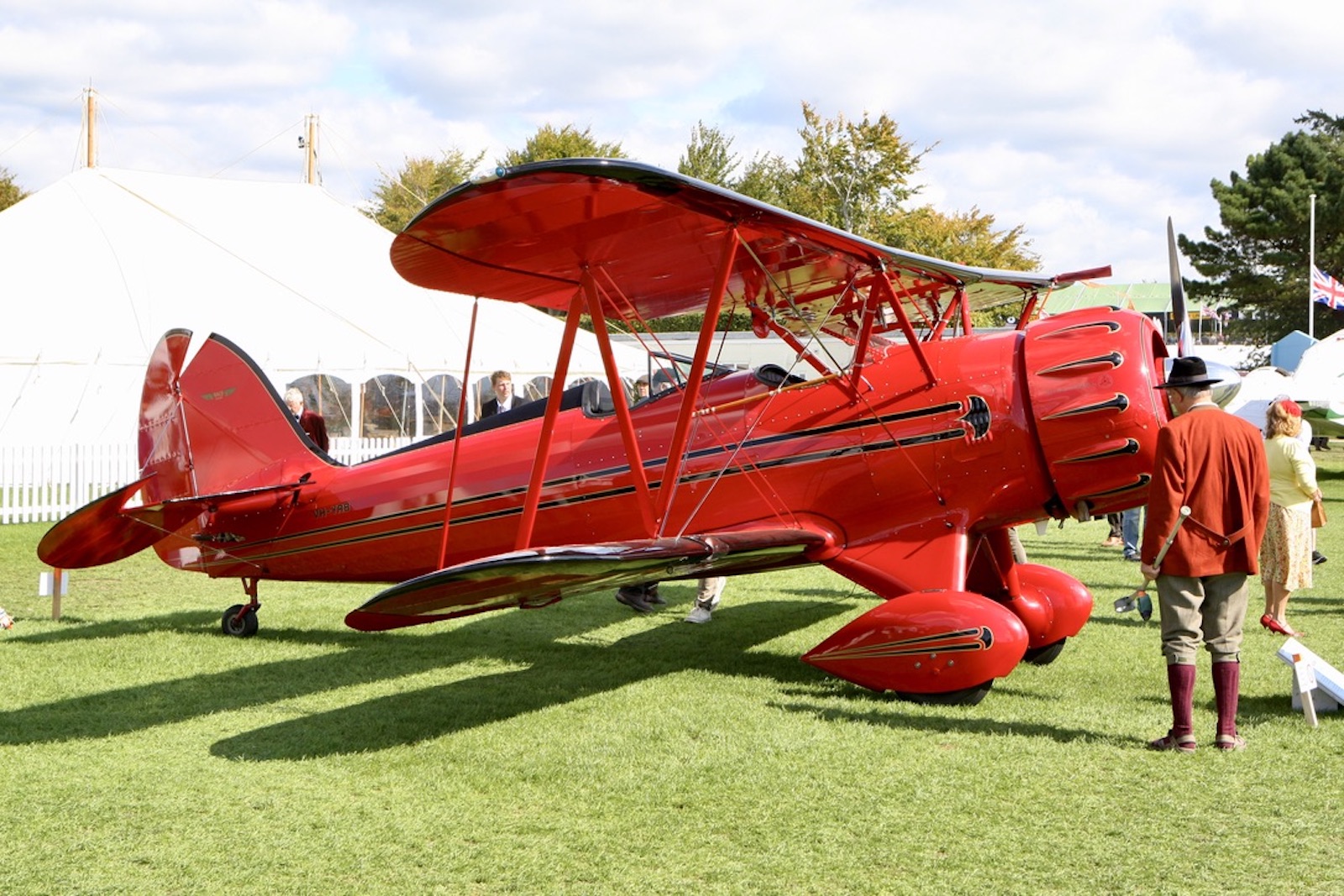
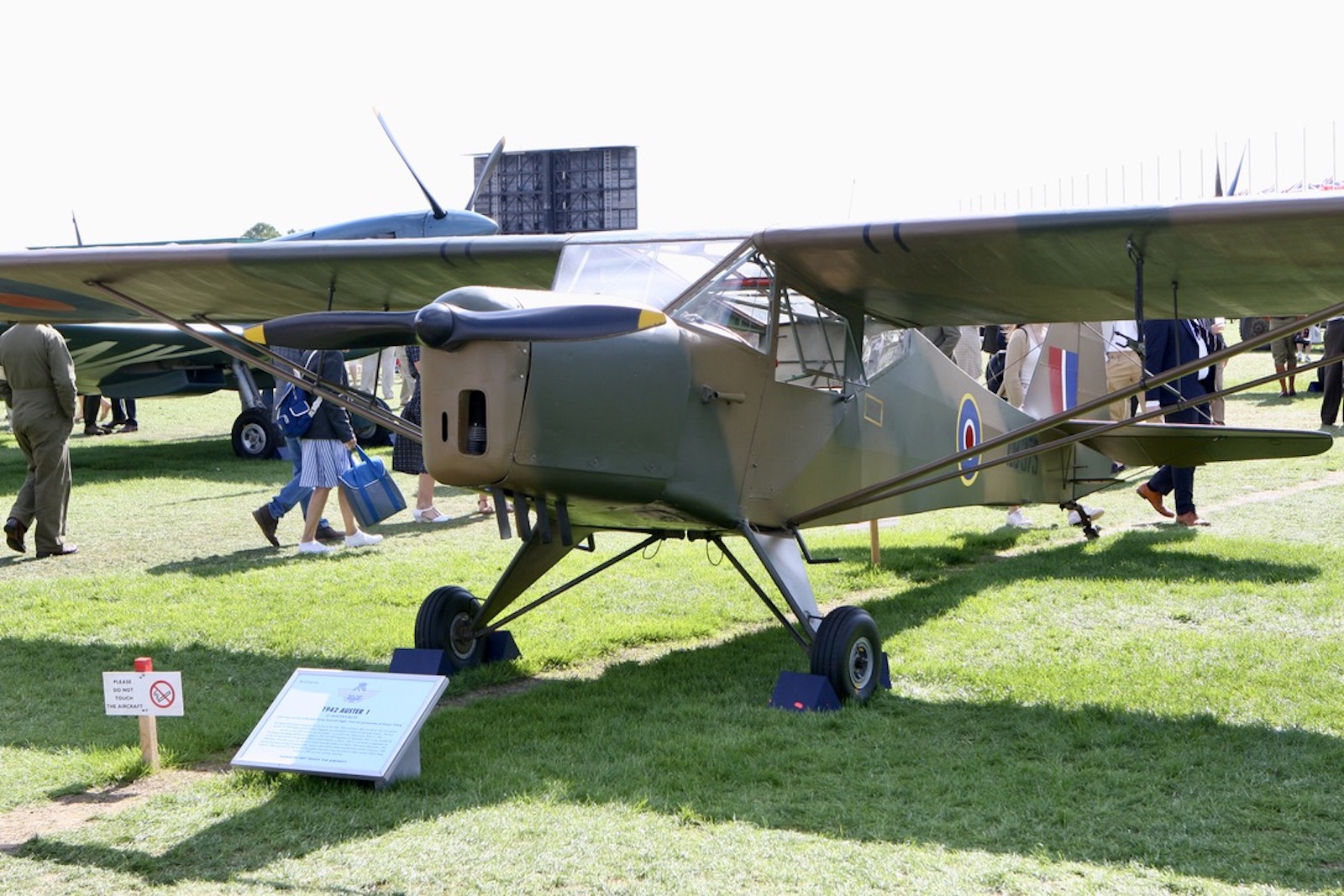
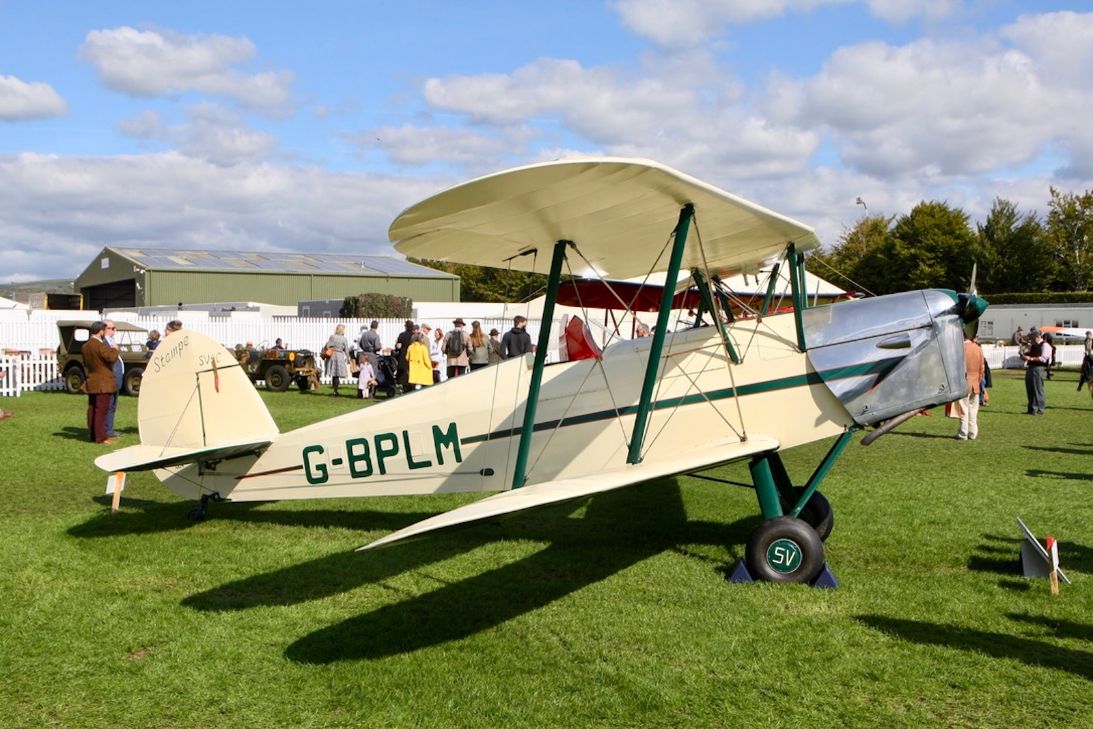
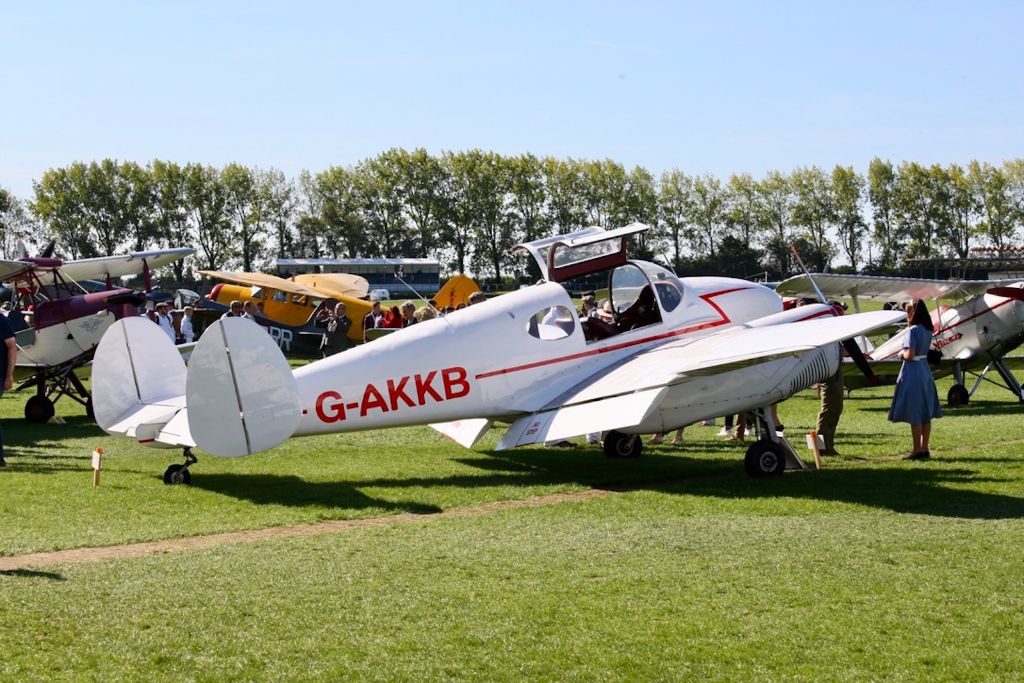
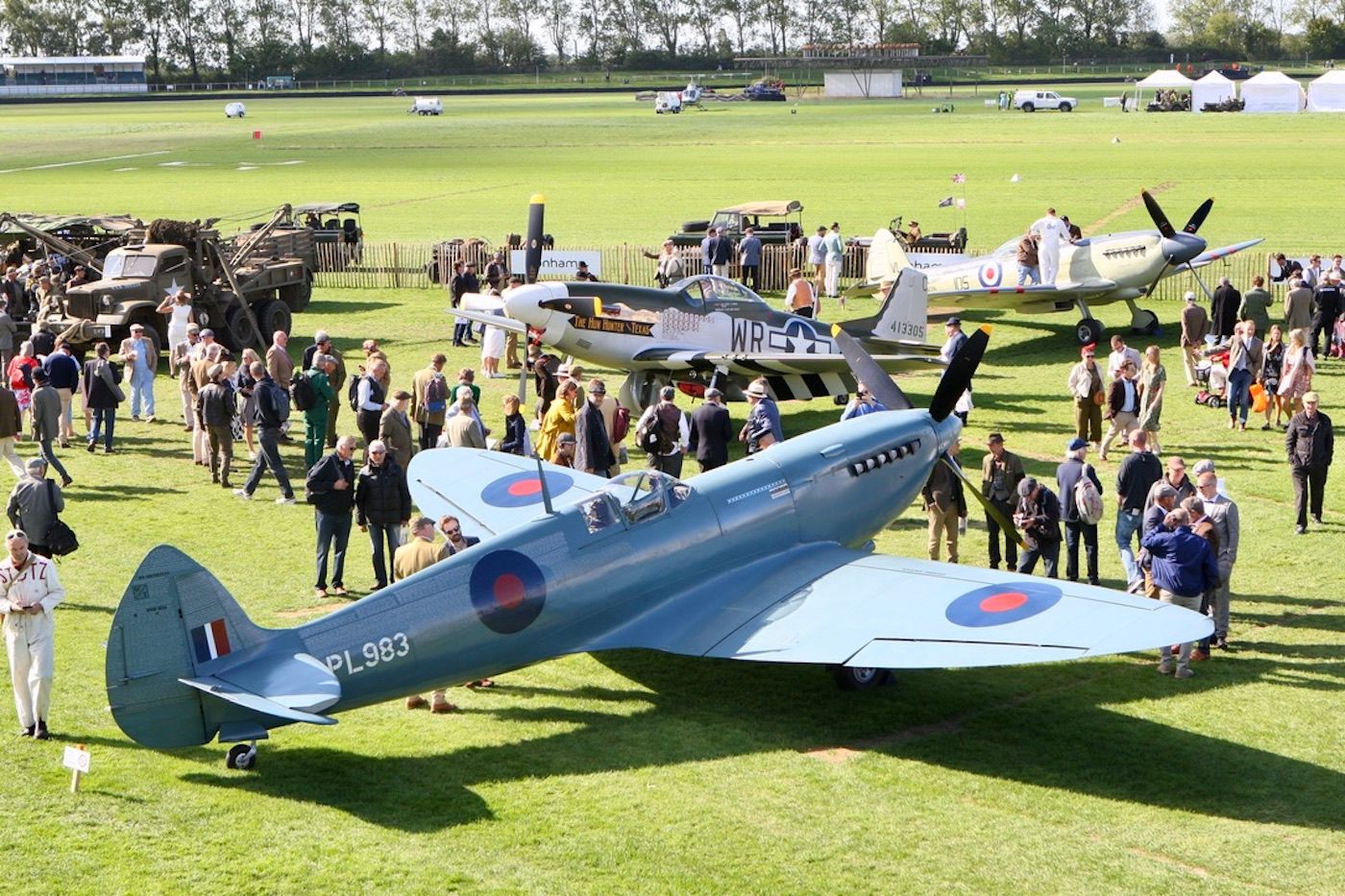
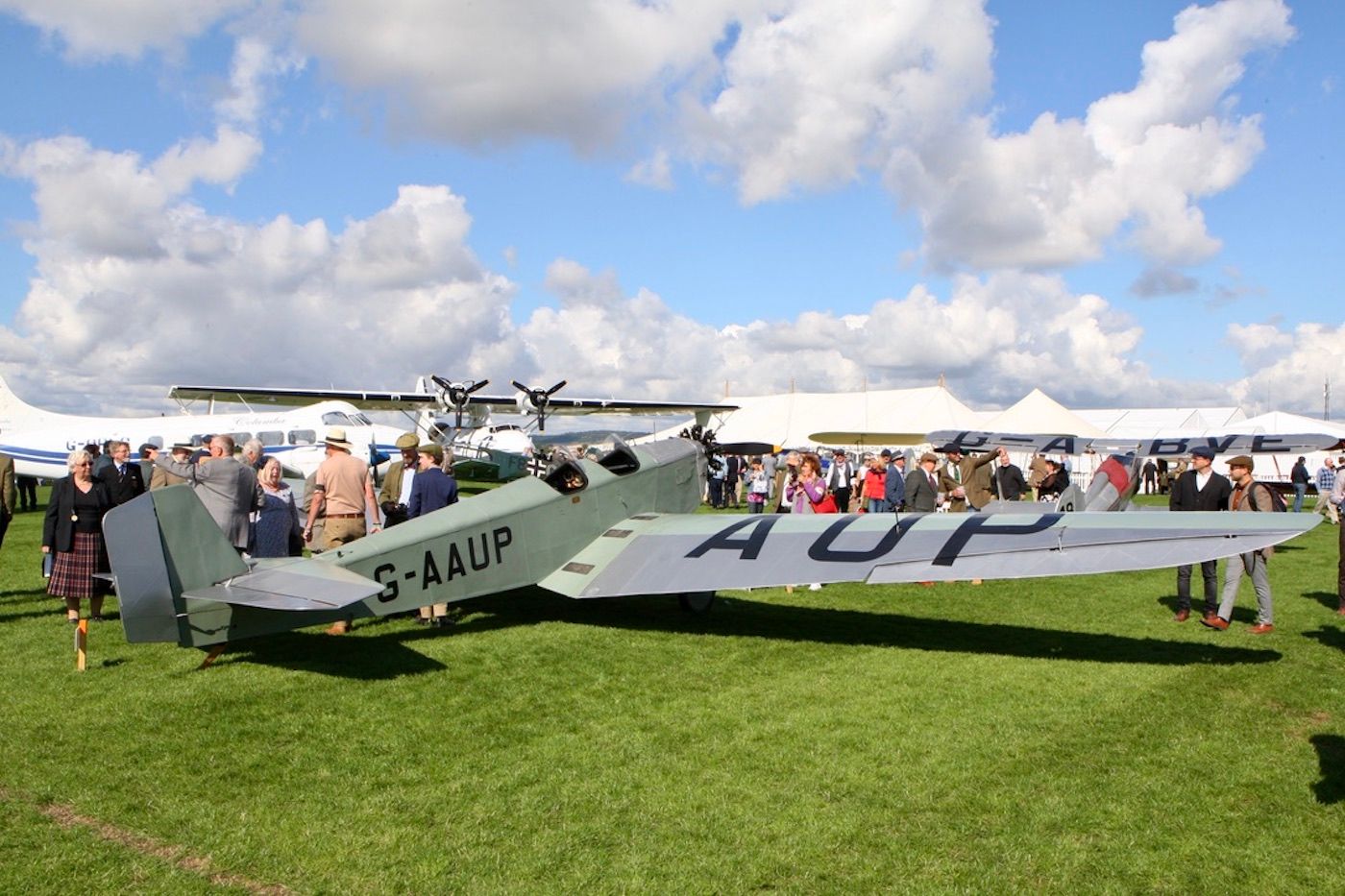
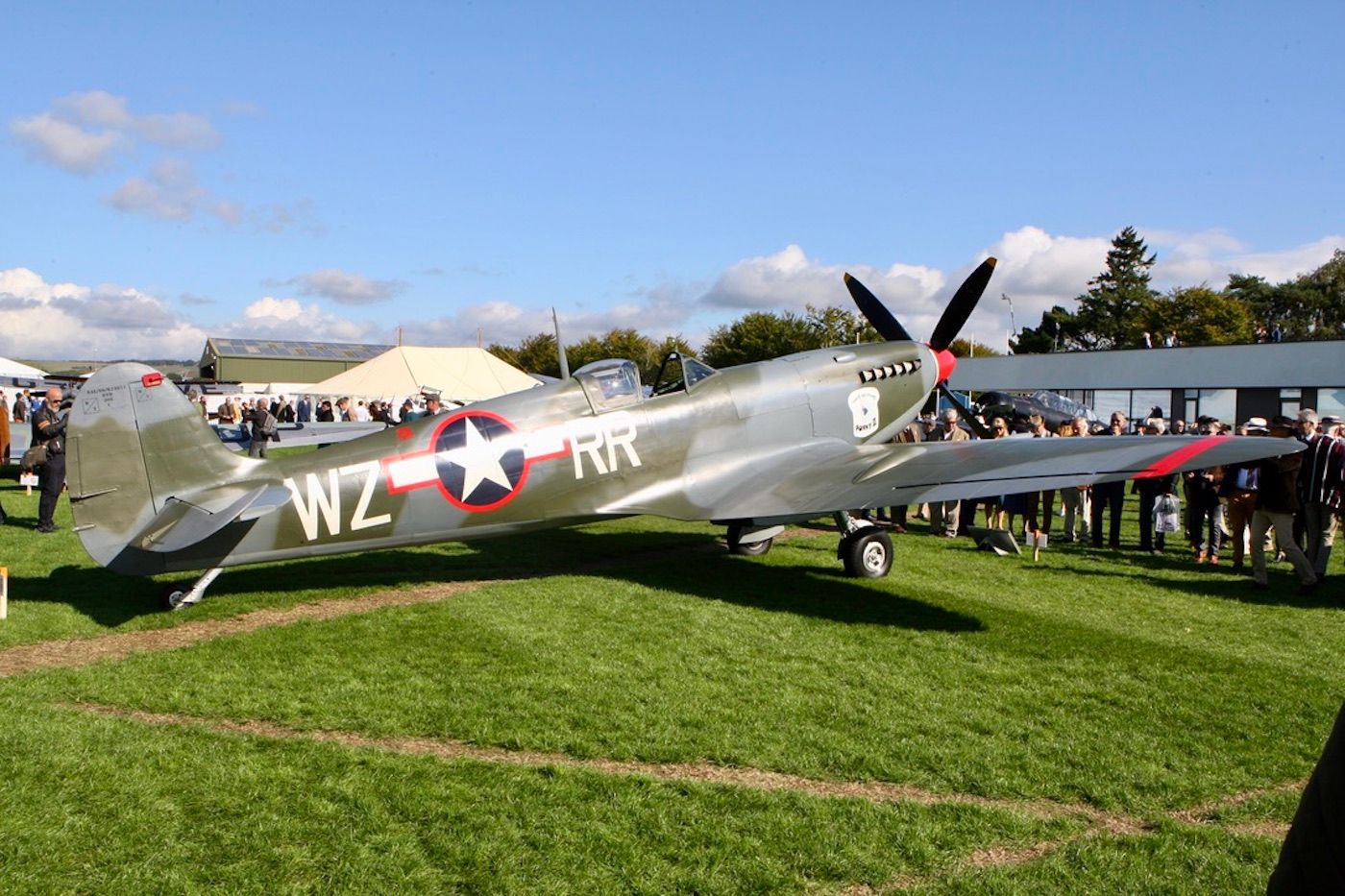
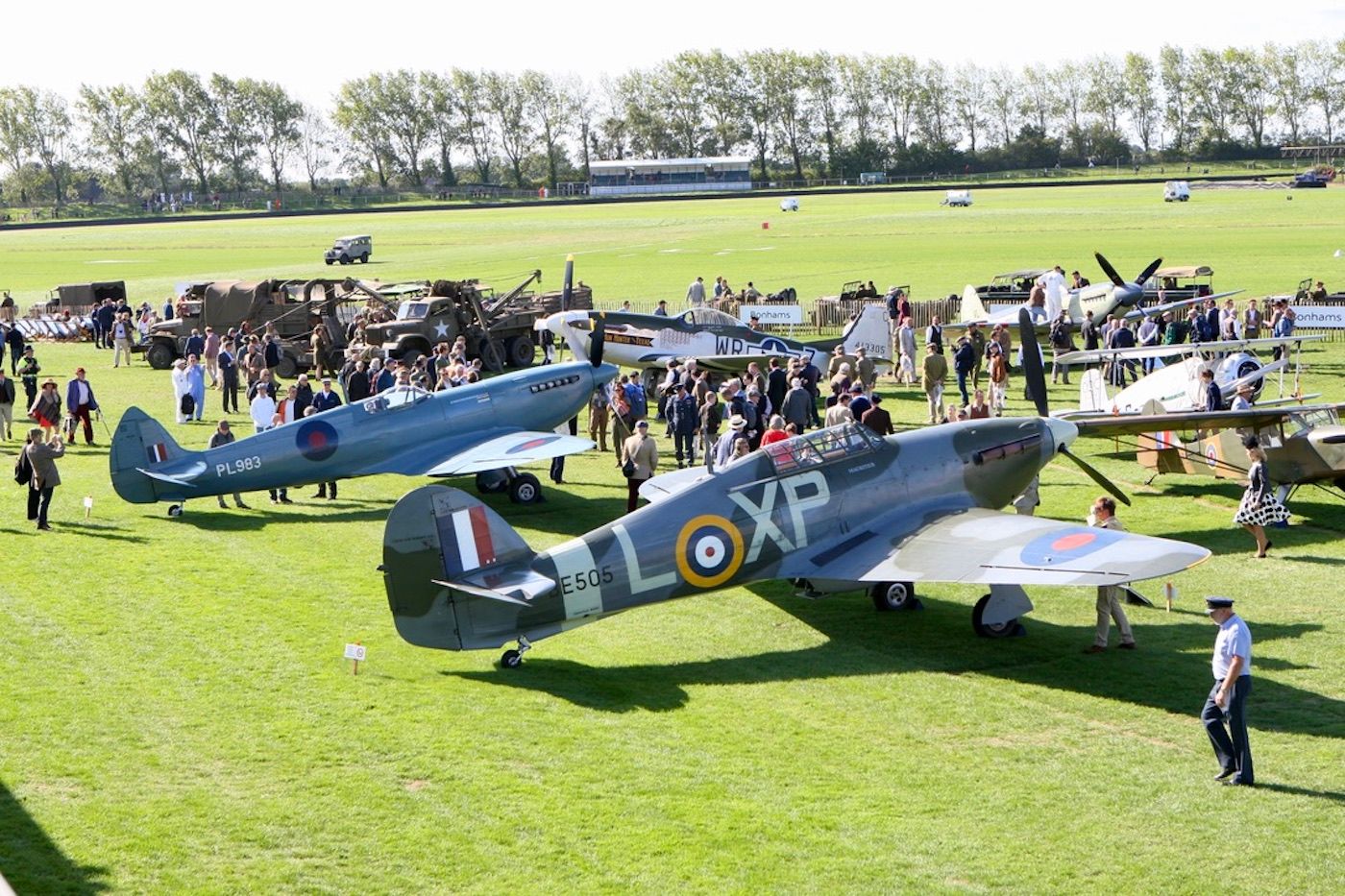
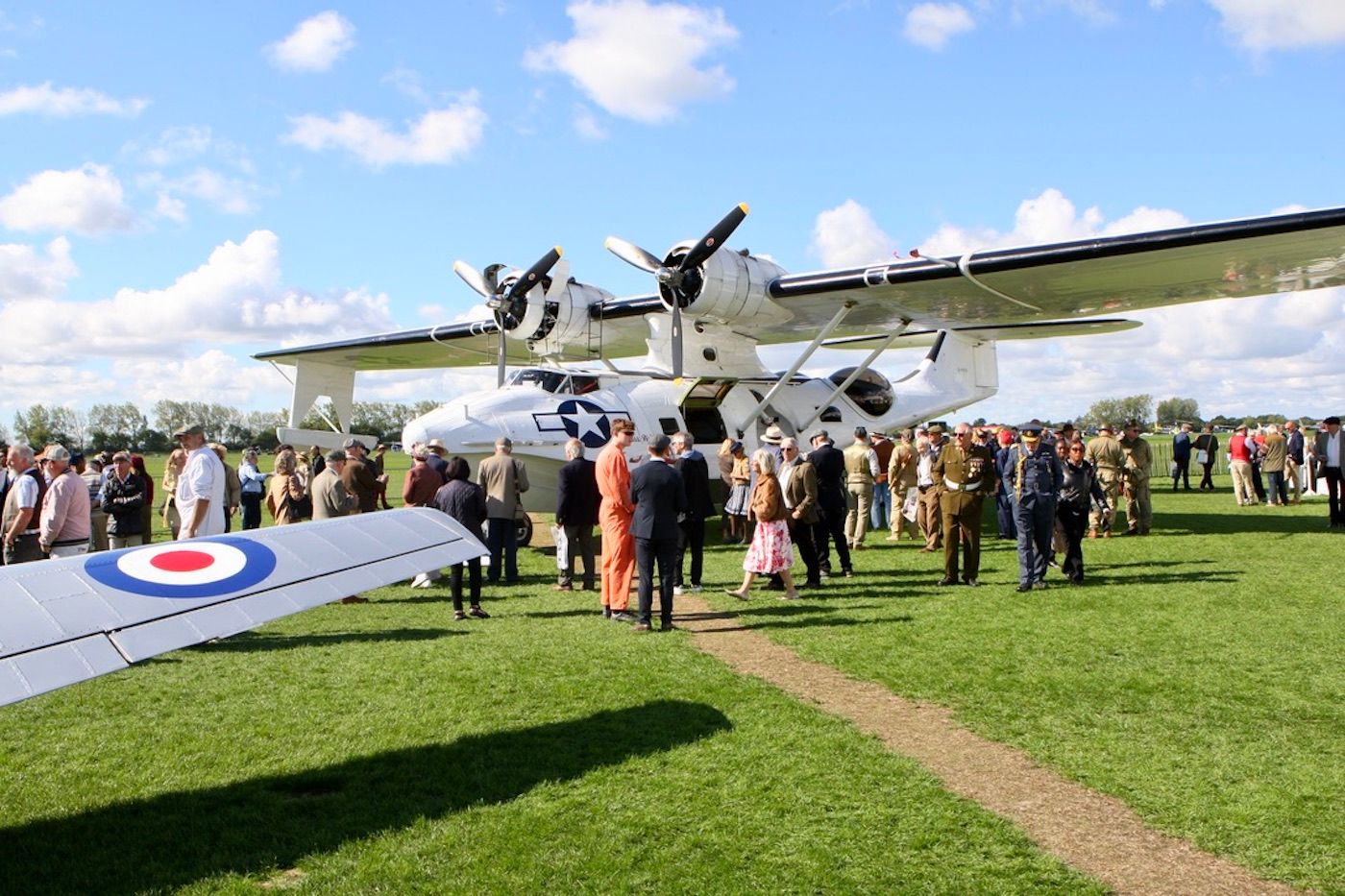
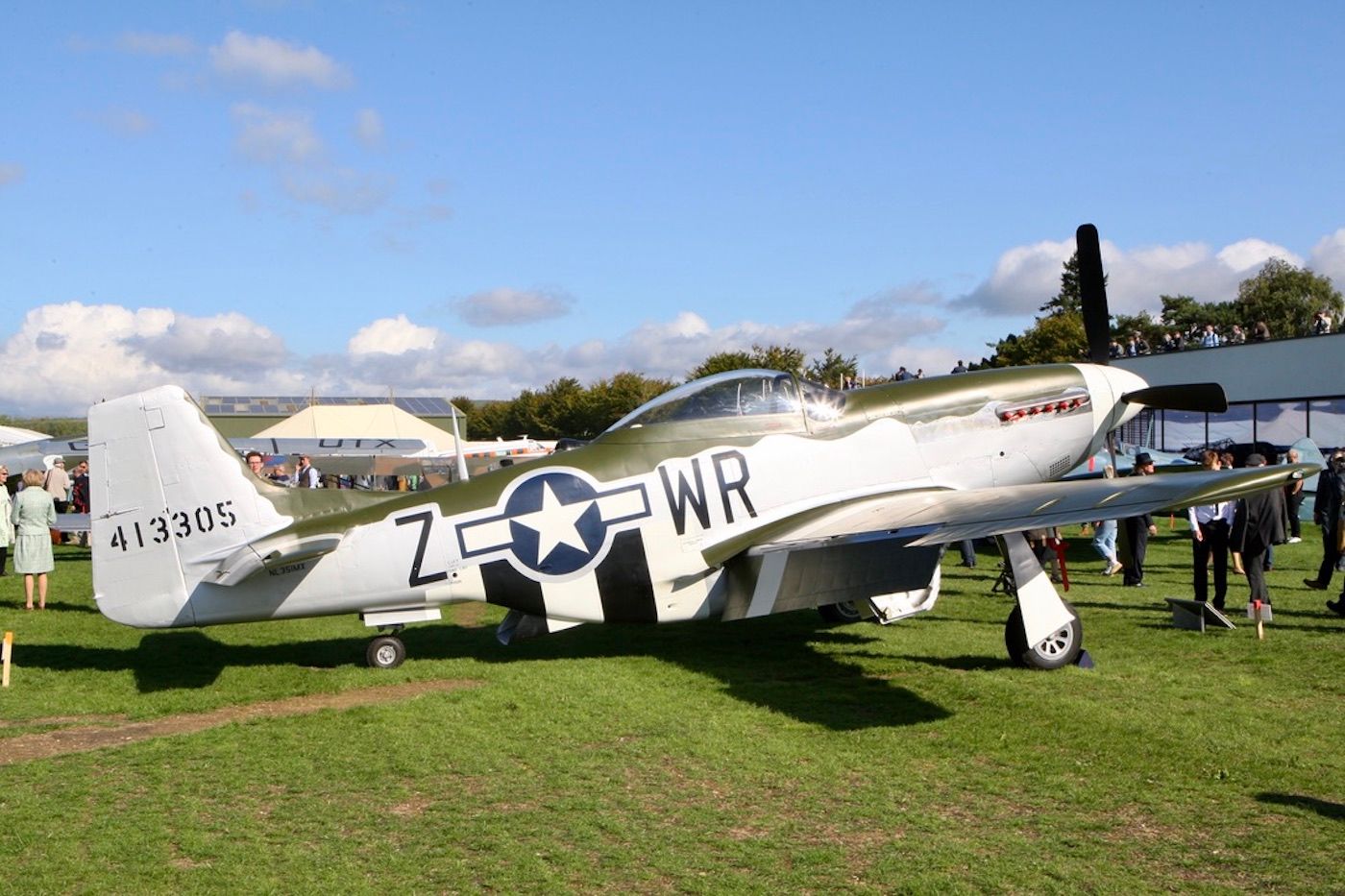
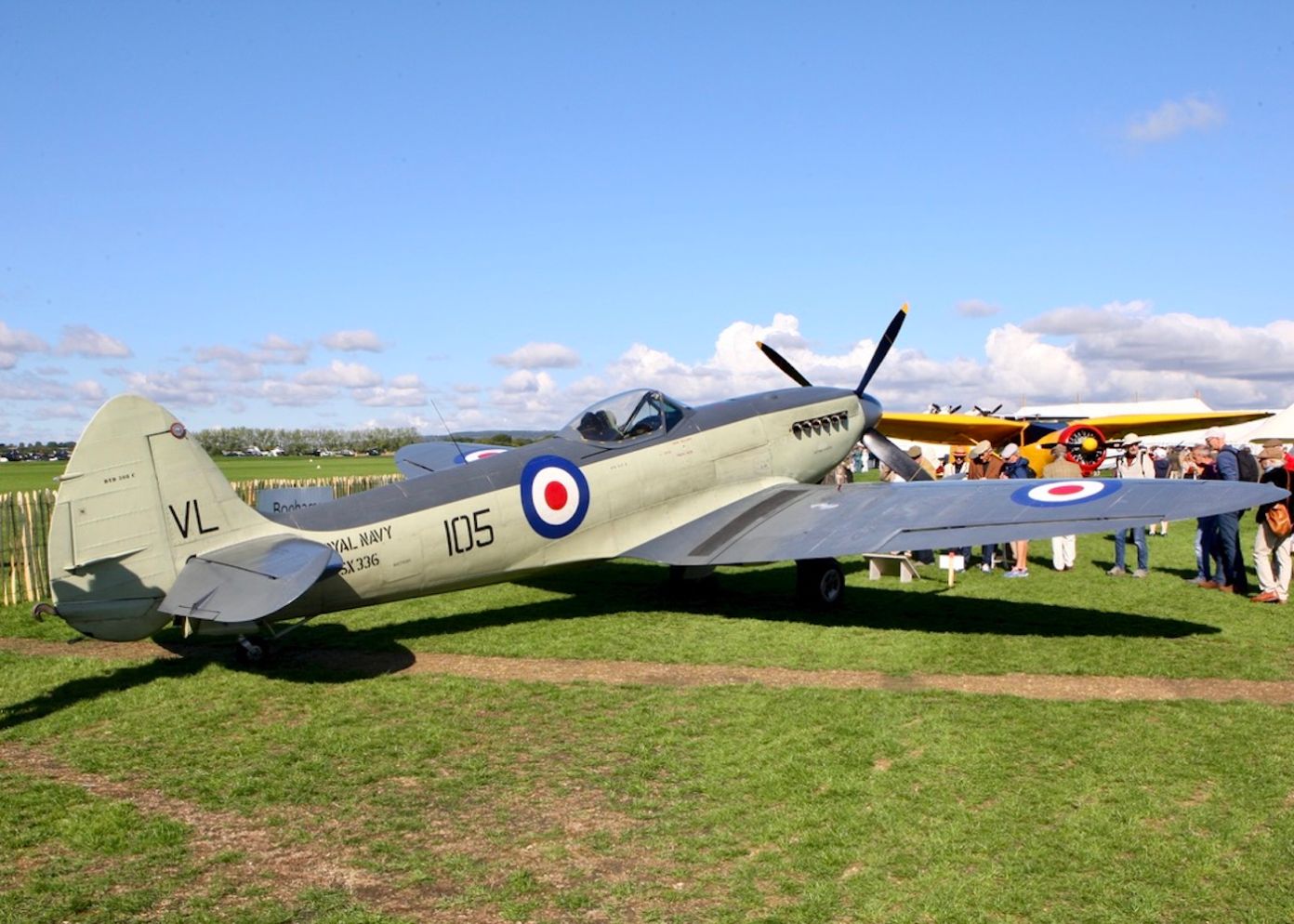
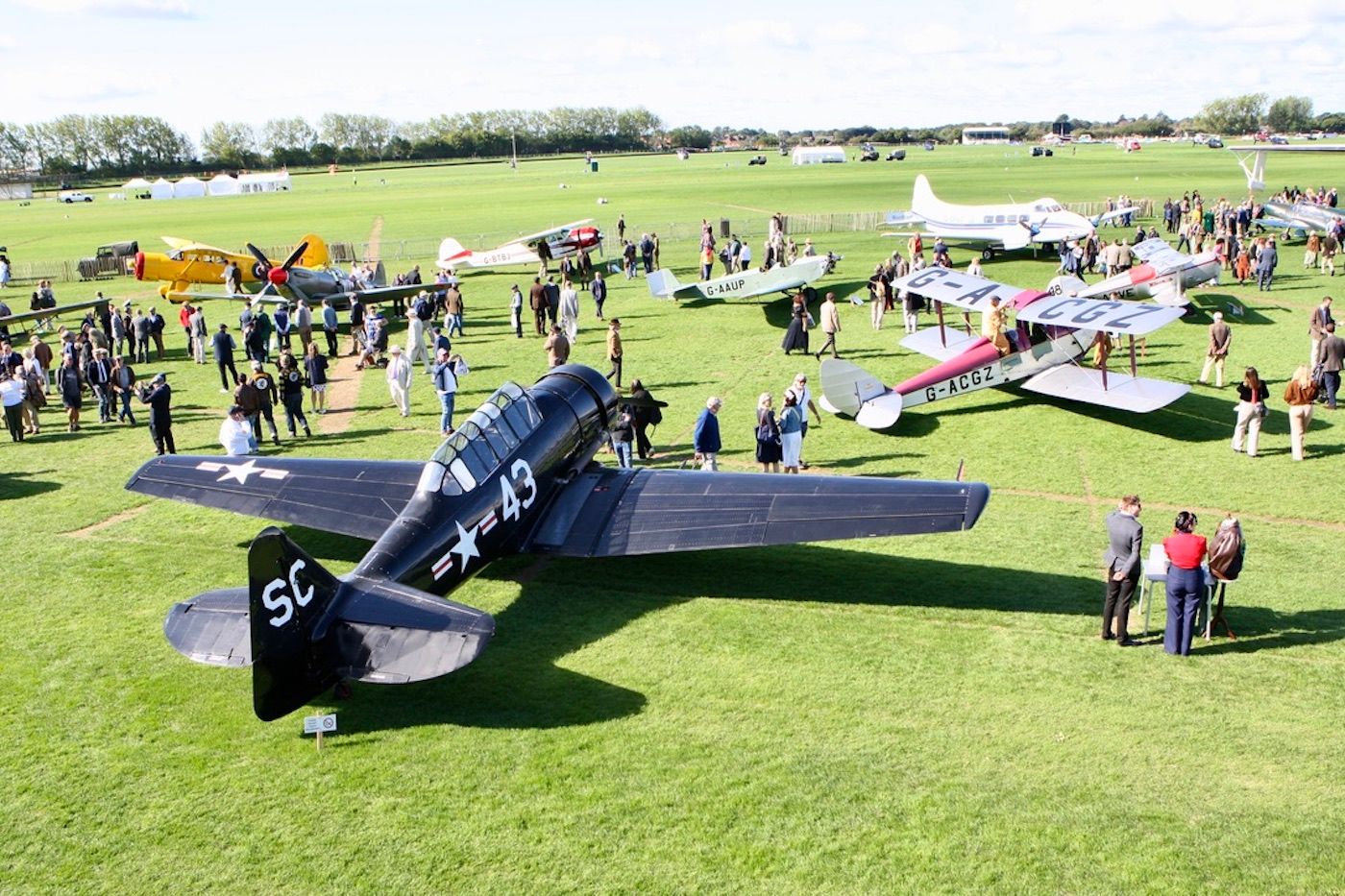
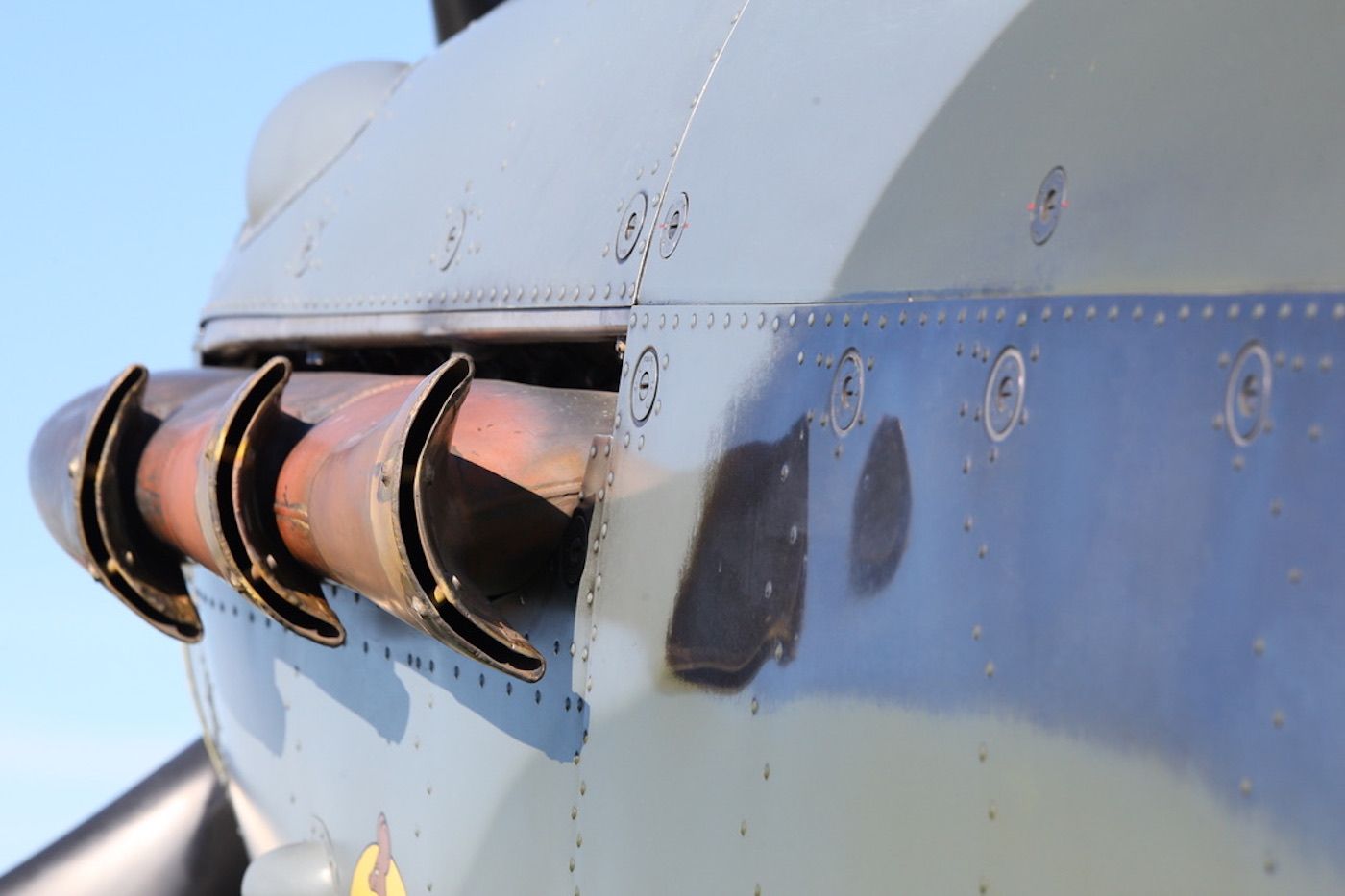
Glorious!
Thank you so much for this amazing article. Aviation is my other love and my professional field. Actually, technically it’s Advanced Air Mobility.
The De Havilland Dragon Rapid biplane the DH104 is a good representation of laminar flow, something the Honda jet adopted for its new jet. Although unintuitive at first sight, it has great aerodynamic properties. It’s amazing to think these folks intuited that without modern simulators and high-powered computers. It reminds me of Pininfarna’s Alfa Romeo Giulia SS, all drawn by hand.
I just got back from Oshkosh EAA’s 70th anniversary where our company was present. I saw a few of these airplanes and more.
I saw the inside mechanism of an open Super Guppy nose. Priceless the number of cable connections that have to be detached and then reattached to actuate the flaps, ailerons, and other fun stuff that makes an airplane fly.
Perhaps the wildest thing I saw fly this year was a U2 in flight. I saw the wings and wondered what it was until I recognized the rarely-seen flying bird. What was wild was the sound of its engine. It was very loud. If anyone wants, I can share a cockpit selfie of the pilot pulling away from Oshkosh.
This year was pretty amazing, despite the usual fatalities